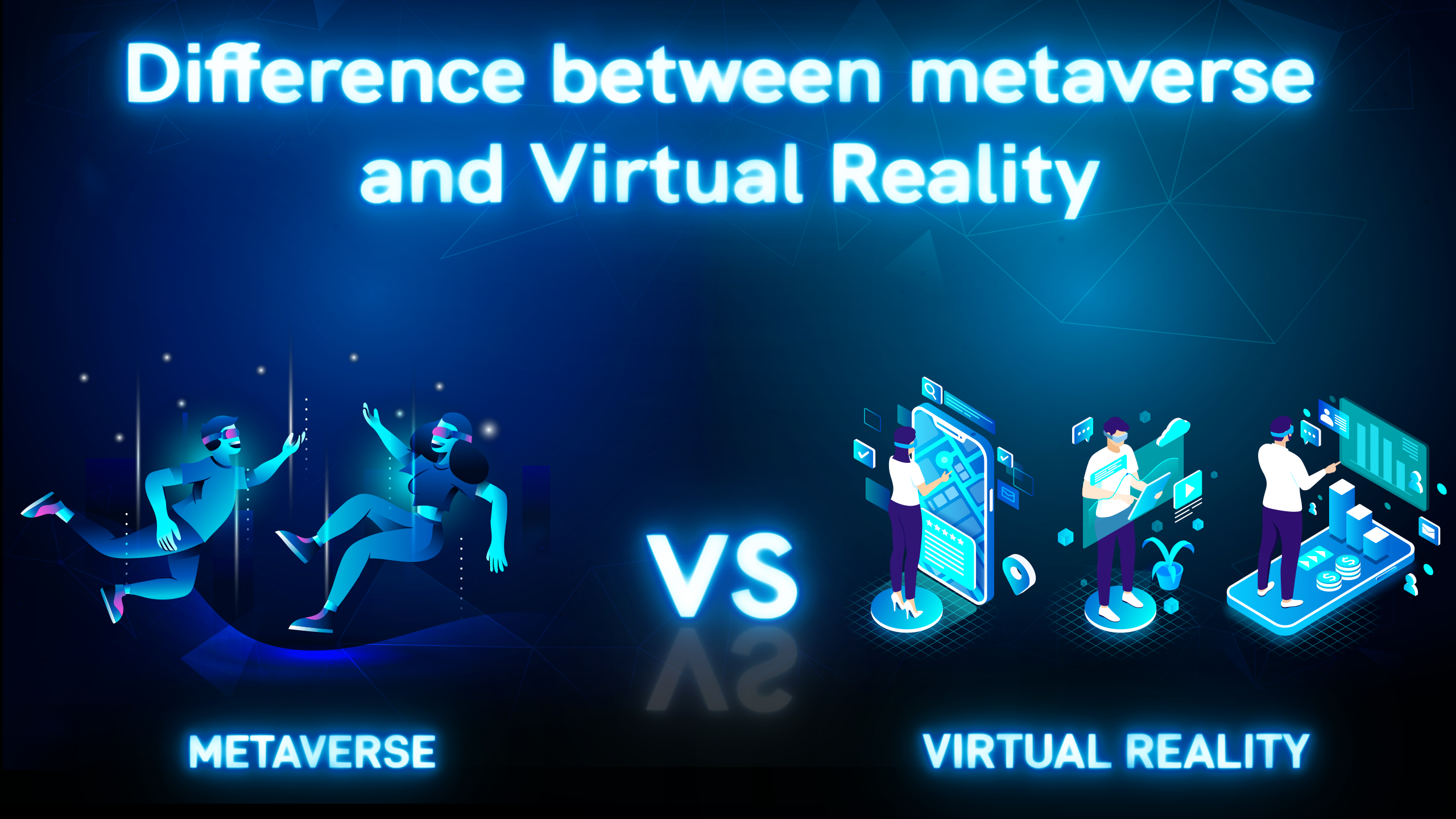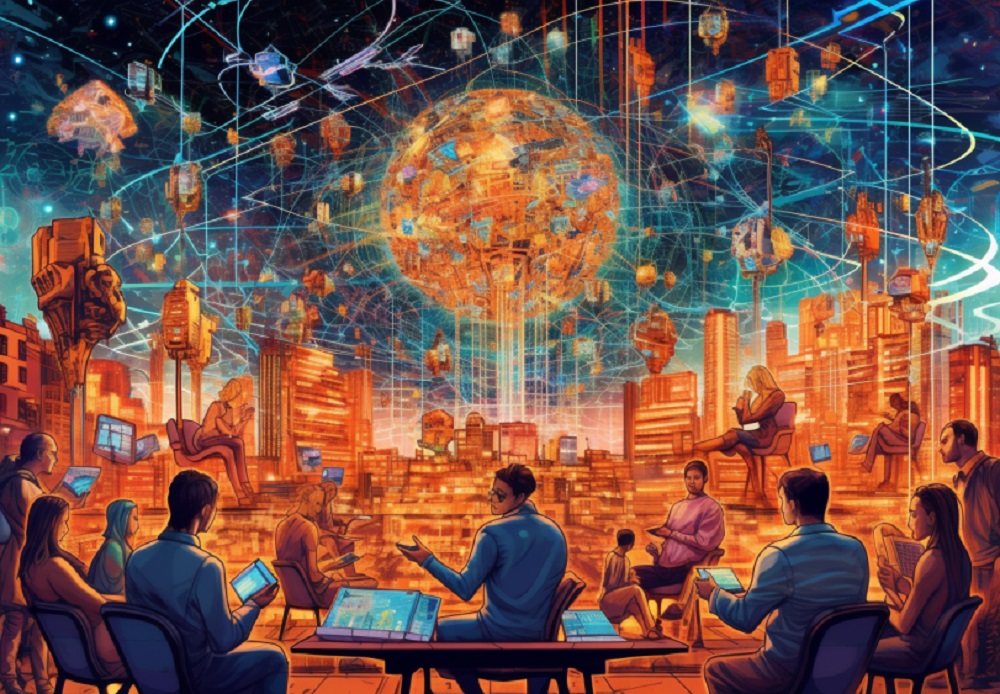The unlimited possibilities of the metaverse have left us with more questions. For example, how do you explain a virtual world where you get to hang out with friends, host parties, meet with clients, and sell digital properties? The most frequently asked metaverse questions sound like this: "What is the metaverse, and how does it work? Is it virtual space or an extension of virtual reality?
If there's one thing these questions reflect, it's simply that the metaverse and virtual reality (VR) share a lot in common — or at least, they appear to. This article attempts these questions by analyzing the differences and possible relationships between the metaverse and virtual reality.
But before we go on, what is the metaverse, and how does it work?
What is the Metaverse?
The metaverse may be described as a digital platform on the internet where users communicate and interact as cartoon avatars in a 3D-rendered community. With a VR headset, you can be anywhere in the world at any time: a virtual marketplace, a business meeting, an art exhibition in Decentraland, or a concert in Sandbox.
In October 2021, Facebook rebranded as Meta and signaled it was going big on this new internet chapter called the metaverse. And ever since, this artificial world earned a top spot among Silicon Valley's favorite buzzwords, with several companies patterning their future to accommodate the possibilities of this new world.
But the concept of metaverse has been around since 1992 when Neal Stephenson published the novel Snow Crash, where he described the metaverse as a virtual shared space incorporating AR, VR, and the internet. Aligning with Zuckerberg's description of the metaverse as an "embodied internet" enabled by artificial reality and virtual reality systems.
Now, we understand that the gist of the metaverse is creating access to information and experiences by navigating a virtual world. At the same time, virtual reality refers to the computer-generated simulation of a 3D image or environment you can interact with using special electronic equipment such as a helmet with a screen or sensor-enabled gloves.
From this, we can infer that virtual reality and the metaverse intersect in how they're geared towards virtual experiences and how the latter depends on the former to fulfill its objective. The above highlights the primary difference, and by extension, their interrelationship. But there's more.
The next section discusses the differences between VR and the metaverse.
What is the Difference Between the Metaverse and Virtual Reality?
Metaverse and VR may share a lot in common. However, here are key differences to bear in mind:
- Metaverse is a Shared Virtual World
The Metaverse includes a shared virtual space that users access through the internet. So, virtual space exists in both the metaverse and virtual reality programs. Personal avatars identify users in virtual locations to buy digital properties like NFTs.
However, the critical difference is that virtual worlds are limited in size, whereas the metaverse aims at an unlimited virtual world with access to the entire internet.
- The Metaverse is not Limited to VR Tech
Metaverse uses much more than virtual reality technologies. It is accessible through augmented reality devices, game consoles, and regular devices to access the internet. By implication, the metaverse incorporates certain features that virtual reality alone guarantees.
A good example is how AR will help project aspects of the metaverse into the real world. The future of the metaverse is that everywhere should be accessible with or without headsets.
- Metaverse is Bigger Than VR
Virtual reality is quite popular in sports, education, and therapy; however, while virtual gaming may be part of the metaverse experience, this isn't metaverse in itself. For instance, leading virtual gaming companies like RiseAngle have implemented a mix of storytelling, blockchain, NFTs, and virtual reality to create an incredible gaming experience.
In terms of scale, the metaverse is an upgrade of the internet. It will change how we work, surf the web, access social media, and live as humans. So, while virtual reality may have been ignored and limited in its uses, the metaverse is a world where everyone who uses the internet is a potential player.
- Unlike the Metaverse, Virtual Reality is Clearly Defined
One notable difference between the metaverse and virtual reality is that while virtual reality is clearly understood, the metaverse isn't. Mark Zuckerberg describes the metaverse as an embodied internet where you're in the content rather than just viewing it. Microsoft is a persistent digital world comprising digital twins of people, things, and places.
These are vague descriptions compared to the precise meaning of the scope of virtual reality. And this is why many view the metaverse as nothing but a buzzword for improvements on the internet.
Therefore, we can agree that virtual reality and the metaverse are two distinct concepts amplified mainly through their aim to achieve. While VR aims to provide an exciting twist to computer screens, the metaverse is geared to offer a compelling alternative to the internet.
How Virtual Reality Relates to the Metaverse
The direct interaction between the metaverse and virtual reality is one of access. Virtual reality is much like that component that allows us to permeate the digital simulations of the metaverse—just not the only one. We need other features like AR, PC, and gaming consoles to access the metaverse.
Virtual reality headsets help us explore the metaverse, but they aren't always needed. You can also participate in the metaverse using your laptop. However, there's also the theory that Facebook's desire to push for a VR-centric future may be unconnected to its plan to widen its market share in the VR-headset market through its Oculus headsets, which sold over 2 million late last year.
Another way virtual reality relates to the metaverse is in its uses, not functions, and is also a part of the universe. Gaming, for example, has revved up the traction for virtual reality, with many companies seeking to build out experiences from the intersection of blockchain, NFTs, and virtual gaming. A leading company in this aspect is RiseAngle Inc., famous for its ability to create an immersive virtual gaming experience, with five games in the market and 300,000+ installs.
Playing virtual gaming with friends. And companies like RiseAngle are designing digital experiences like World of Mazes NFT Games Metaverse and Rise Angle Membership NFT to improve the metaverse. The metaverse has been described as a moment, and virtual gaming experiences create these moments in their shared social spaces. Mark Zuckerberg agrees: according to him, the metaverse is already here, mainly in virtual games.
Conclusion
It is worth remembering that while the metaverse has VR elements, not all VR systems are part of the metaverse.VR is necessary for accessing the metaverse, but AR, PCs, and gaming consoles are also required. We should also remember that virtual gaming is a fun twist on our traditional computer screens, while the metaverse is a successor to the internet.






